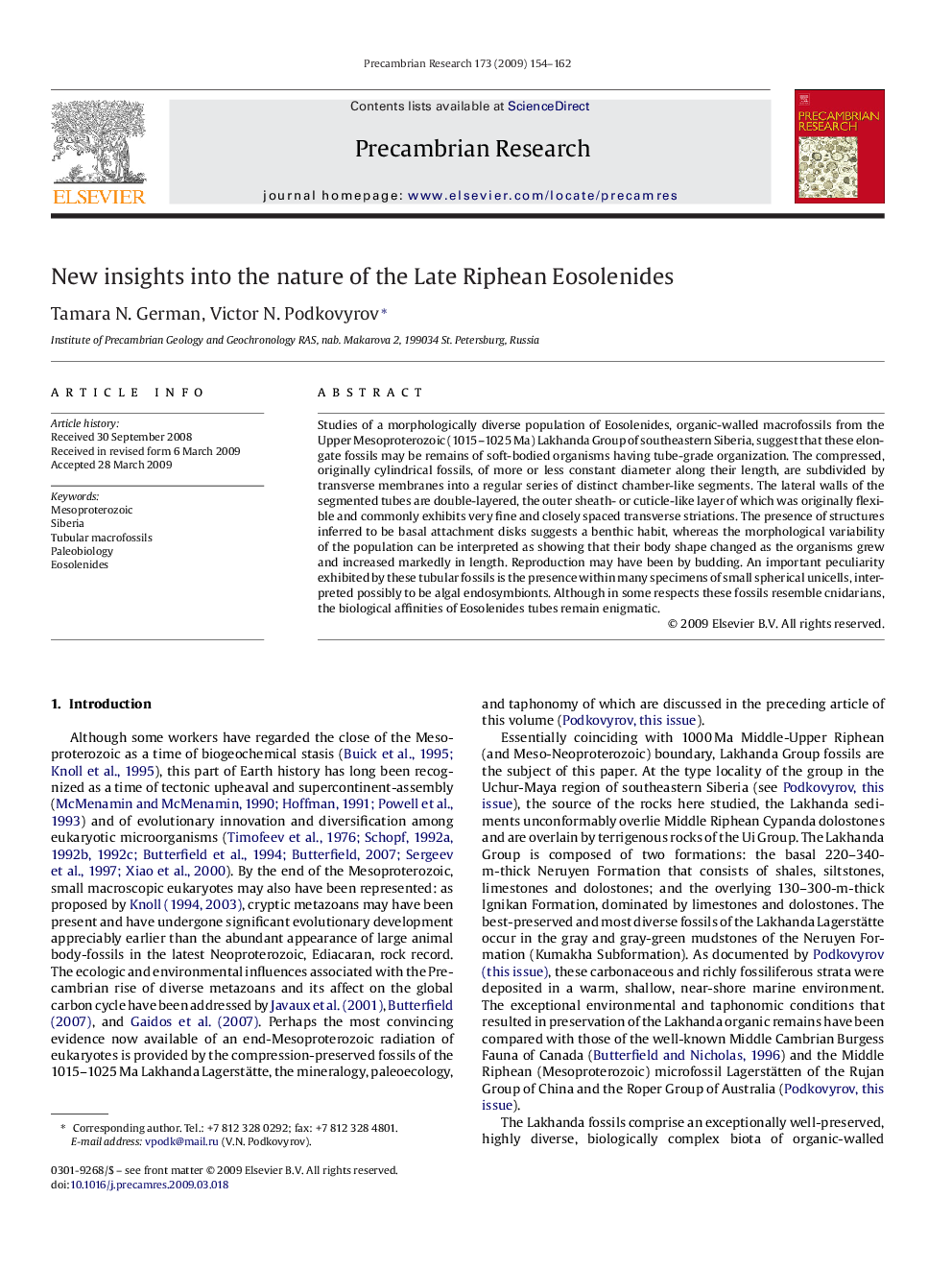| Article ID | Journal | Published Year | Pages | File Type |
|---|---|---|---|---|
| 4724032 | Precambrian Research | 2009 | 9 Pages |
Abstract
Studies of a morphologically diverse population of Eosolenides, organic-walled macrofossils from the Upper Mesoproterozoic (1015-1025Â Ma) Lakhanda Group of southeastern Siberia, suggest that these elongate fossils may be remains of soft-bodied organisms having tube-grade organization. The compressed, originally cylindrical fossils, of more or less constant diameter along their length, are subdivided by transverse membranes into a regular series of distinct chamber-like segments. The lateral walls of the segmented tubes are double-layered, the outer sheath- or cuticle-like layer of which was originally flexible and commonly exhibits very fine and closely spaced transverse striations. The presence of structures inferred to be basal attachment disks suggests a benthic habit, whereas the morphological variability of the population can be interpreted as showing that their body shape changed as the organisms grew and increased markedly in length. Reproduction may have been by budding. An important peculiarity exhibited by these tubular fossils is the presence within many specimens of small spherical unicells, interpreted possibly to be algal endosymbionts. Although in some respects these fossils resemble cnidarians, the biological affinities of Eosolenides tubes remain enigmatic.
Keywords
Related Topics
Physical Sciences and Engineering
Earth and Planetary Sciences
Geochemistry and Petrology
Authors
Tamara N. German, Victor N. Podkovyrov,
